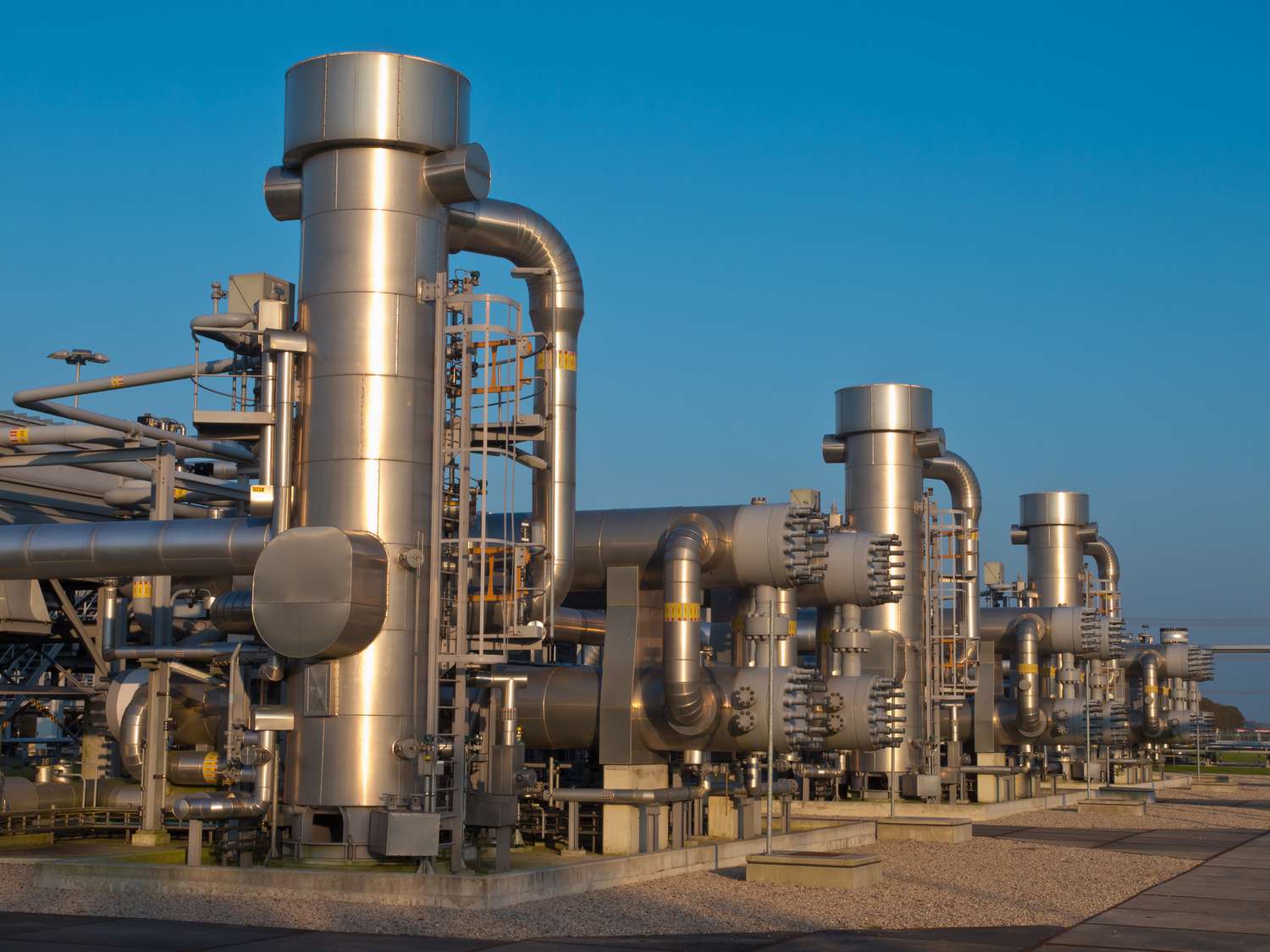Gas midstream companies play an essential role in the energy sector, acting as the crucial link between the production and consumption of natural gas. These companies are responsible for gathering, processing, transporting, and storing natural gas, ensuring a steady and reliable supply to end users. This article delves into the intricate workings of gas midstream companies, their importance in the energy supply chain, and the challenges they face in a rapidly evolving energy landscape.
Understanding the Gas Midstream Sector
The midstream sector is the central segment of the oil and gas industry, sandwiched between upstream (exploration and production) and downstream (refining and distribution). Midstream activities primarily focus on the transportation and storage of hydrocarbons, including natural gas, crude oil, and refined products. Here, we will explore the key components of the gas midstream sector.
Gathering and Processing
The journey of natural gas begins at the wellhead, where it is extracted from underground reservoirs. However, raw natural gas often contains various impurities such as water, carbon dioxide, hydrogen sulfide, and natural gas liquids (NGLs). Midstream companies are responsible for gathering this raw gas from multiple wellheads and transporting it to processing facilities.
The Gathering Process
The gathering process involves a network of small-diameter pipelines that collect natural gas from various production sites. These pipelines, often referred to as gathering systems, transport the gas to centralized processing plants. The gathering infrastructure is crucial for bringing natural gas from remote production areas to processing and transportation hubs.
Processing Natural Gas
Once the raw gas reaches the processing plant, it undergoes several purification steps. The primary goals of processing are to remove impurities and separate NGLs from the methane-rich gas. Key processes include:
- Separation: Using mechanical separators to remove free liquids and solids.
- Dehydration: Removing water vapor to prevent pipeline corrosion and hydrate formation.
- Sweetening: Removing acidic gases like carbon dioxide and hydrogen sulfide.
- NGL Extraction: Separating NGLs such as ethane, propane, butanes, and pentanes for further processing and sale.
Transportation
After processing, the purified natural gas must be transported to end-users, including power plants, industrial facilities, and residential consumers. Midstream companies utilize an extensive network of pipelines and other transportation methods to achieve this.
Pipelines
Pipelines are the backbone of natural gas transportation. These high-pressure, large-diameter pipelines move vast quantities of gas across long distances, often spanning several states or even countries. The pipeline network includes:
- Transmission Pipelines: Large-diameter pipelines that transport gas from processing plants to distribution networks or storage facilities.
- Distribution Pipelines: Smaller-diameter pipelines that deliver gas to homes and businesses.
Compressor Stations
To maintain the flow of natural gas over long distances, compressor stations are strategically placed along the pipeline network. These stations use turbines, motors, or engines to increase the pressure of the gas, compensating for pressure losses that occur as the gas travels through the pipeline.
Storage
Natural gas demand can fluctuate significantly due to seasonal variations and other factors. To ensure a steady supply, midstream companies use various storage methods to balance supply and demand.
Types of Storage
- Underground Storage: Natural gas is stored in underground facilities, such as depleted oil and gas reservoirs, aquifers, and salt caverns. These storage sites can hold large quantities of gas and provide a buffer against demand spikes.
- Liquefied Natural Gas (LNG) Storage: Natural gas is cooled to -260 degrees Fahrenheit to become LNG, reducing its volume by approximately 600 times. LNG can be stored in specially designed tanks and transported by ship to markets where pipeline infrastructure is limited.
The Importance of Gas Midstream Companies
Gas midstream companies play a vital role in the energy sector by bridging the gap between natural gas production and consumption. Gas midstream companies are responsible for gathering raw natural gas from wellheads, processing it to meet quality standards, and then transporting it efficiently through pipelines to end-users.
Ensuring Energy Reliability
Natural gas is a critical energy source, accounting for a significant portion of electricity generation, heating, and industrial processes. Midstream companies ensure the continuous flow of gas from production sites to end-users, preventing supply disruptions and ensuring energy reliability.
Economic Impact
The midstream sector is a significant contributor to the economy, providing numerous jobs and generating substantial revenue. Investments in pipeline infrastructure, processing plants, and storage facilities drive economic growth and create opportunities for local communities.
Environmental Benefits
Natural gas is considered a cleaner-burning fossil fuel compared to coal and oil. By facilitating the efficient transport and use of natural gas, midstream companies contribute to reducing greenhouse gas emissions and improving air quality. Additionally, advances in midstream technologies and practices help minimize methane leaks and other environmental impacts.
Challenges Facing the Gas Midstream Sector
Despite their critical role, gas midstream companies face several challenges that can impact their operations and future growth. These challenges include regulatory pressures, infrastructure constraints, market dynamics, and the transition to renewable energy.
Regulatory Pressures
The gas midstream sector is subject to extensive regulation at federal, state, and local levels. Regulations govern pipeline safety, environmental protection, and market practices. Compliance with these regulations can be costly and time-consuming, requiring companies to invest in monitoring, reporting, and mitigation measures.
Infrastructure Constraints
Expanding and maintaining midstream infrastructure is a complex and capital-intensive endeavor. Issues such as land acquisition, permitting delays, and public opposition can hinder the development of new pipelines and facilities. Additionally, aging infrastructure requires continuous investment to ensure safety and reliability.
Market Dynamics
The natural gas market is influenced by various factors, including supply and demand fluctuations, commodity prices, and geopolitical events. Midstream companies must navigate these dynamics to optimize their operations and maintain profitability. Price volatility and changes in market conditions can impact contract negotiations and investment decisions.
Transition to Renewable Energy
The global shift towards renewable energy sources poses both challenges and opportunities for the gas midstream sector. While natural gas is expected to play a role as a transitional fuel, the increasing adoption of renewables and energy storage technologies could reduce demand for natural gas over time. Midstream companies need to adapt to this changing landscape by exploring new business models and diversifying their services.
Technological Innovations in the Gas Midstream Sector
To address the challenges and enhance operational efficiency, gas midstream companies are increasingly leveraging technological innovations. These advancements are transforming how companies manage their assets, monitor operations, and improve safety.
Pipeline Monitoring and Inspection
Advanced monitoring and inspection technologies are critical for ensuring the integrity and safety of pipeline infrastructure. Innovations in this area include:
- Drones and Robotics: Unmanned aerial vehicles (UAVs) and robotic devices can inspect pipelines and facilities, detecting leaks, corrosion, and other issues more efficiently than traditional methods.
- Smart Sensors: Internet of Things (IoT) sensors provide real-time data on pipeline conditions, enabling proactive maintenance and rapid response to potential problems.
- Advanced Analytics: Machine learning and data analytics can predict equipment failures, optimize maintenance schedules, and improve decision-making.
Digitalization and Automation
Digitalization and automation are transforming midstream operations, enhancing efficiency and reducing costs. Key technologies include:
- Supervisory Control and Data Acquisition (SCADA) Systems: SCADA systems provide centralized control and monitoring of midstream assets, improving operational efficiency and safety.
- Artificial Intelligence (AI): AI algorithms can optimize routing, detect anomalies, and predict demand patterns, enabling more efficient and reliable gas transport.
- Blockchain: Blockchain technology can enhance transparency and security in transactions, supply chain management, and regulatory compliance.
Environmental Monitoring and Mitigation
To address environmental concerns and regulatory requirements, midstream companies are adopting advanced environmental monitoring and mitigation technologies.
- Methane Detection: Advanced sensors and satellite technology can detect and quantify methane emissions, helping companies reduce their environmental footprint.
- Carbon Capture and Storage (CCS): CCS technologies capture carbon dioxide emissions from processing plants and other facilities, preventing them from entering the atmosphere.
The Future of Gas Midstream Companies
As the energy landscape evolves, gas midstream companies must navigate a complex and dynamic environment. Several trends and developments are shaping the future of the midstream sector.
Integration with Renewable Energy
The integration of natural gas with renewable energy sources is a key trend in the transition to a low-carbon economy. Gas midstream companies are exploring ways to support renewable energy projects, such as:
- Renewable Natural Gas (RNG): RNG is produced from organic waste materials and can be transported through existing natural gas infrastructure. Midstream companies are investing in RNG projects to diversify their energy portfolios.
- Hydrogen: Hydrogen, produced through electrolysis using renewable electricity, is seen as a potential future energy carrier. Midstream companies are exploring the transportation and storage of hydrogen as part of a diversified energy mix.
Decarbonization Initiatives
Decarbonization is a major focus for the energy sector, and midstream companies are implementing strategies to reduce their carbon footprint. Initiatives include:
- Energy Efficiency: Improving the energy efficiency of midstream operations through advanced technologies and process optimization.
- Emissions Reduction: Implementing measures to reduce methane emissions, such as leak detection and repair programs.
- Carbon Offsetting: Investing in carbon offset projects to compensate for emissions that cannot be eliminated.
Infrastructure Modernization
The modernization of midstream infrastructure is essential for maintaining reliability and safety. Companies are investing in upgrading aging pipelines, expanding capacity, and enhancing monitoring capabilities. Modernization efforts also focus on integrating digital technologies to improve asset management and operational efficiency.
Strategic Partnerships and Collaborations
Collaboration with other industry players, technology providers, and regulatory bodies is critical for addressing the challenges and opportunities in the midstream sector. Strategic partnerships can drive innovation, share risks, and accelerate the deployment of new technologies. Collaborative efforts are also essential for developing industry standards and best practices.
Conclusion
Gas midstream companies are the backbone of the energy transportation network, ensuring the reliable and efficient movement of natural gas from production sites to end-users around the world. Their role in gathering, processing, transporting, and storing natural gas is indispensable for meeting energy demands, supporting economic growth, and advancing environmental sustainability.
As the world moves towards a more diverse and integrated energy future, gas midstream companies are well-positioned to play a crucial role in facilitating the transition. By embracing innovation, forging strategic partnerships, and adapting to changing market dynamics, these companies can continue to serve as the backbone of energy transportation, ensuring a reliable and sustainable energy supply for generations to come.
Keep an eye for more news & updates on Timesanalysis.Com!



